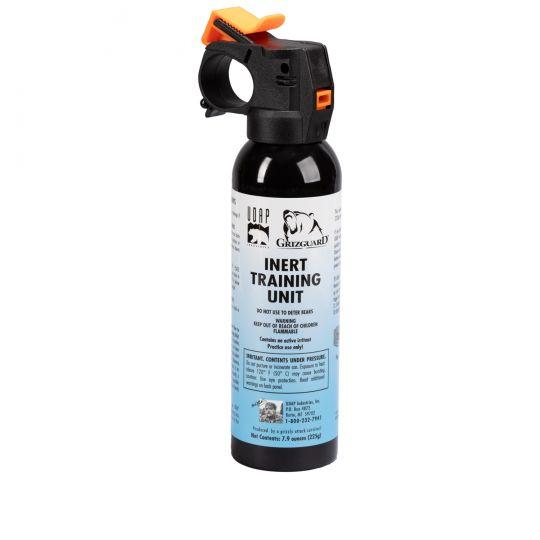Table of Contents
- Understanding the Fundamentals of Inert Spray Techniques for Enhanced Safety
- Designing Practical Training Sessions to Build Confidence and Competence
- Incorporating Realistic Scenarios to Improve Decision-Making Under Pressure
- Evaluating Performance and Providing Constructive Feedback for Continuous Improvement
- Final Thoughts
Understanding the Fundamentals of Inert Spray Techniques for Enhanced Safety
Inert spray techniques serve as a critical safety mechanism, effectively reducing the risk of combustion in hazardous environments. By displacing oxygen or combustible gases with non-reactive substances like nitrogen or carbon dioxide, these methods create an atmosphere that prevents ignition. The precision and timing of the spray deployment are vital; too little can leave the area vulnerable, while excessive inert gas can lead to operational disruptions. Mastery in controlling this balance ensures not only safety but also maintains the integrity of sensitive equipment and processes.
Effective deployment hinges on understanding key operational elements, including spray pressure, nozzle type, and dispersion patterns. Training drills that simulate real-world scenarios allow personnel to hone their ability to identify risks and react swiftly, minimizing downtime and enhancing overall safety protocols. Common best practices include:
- Routine equipment inspection and maintenance to prevent failures during deployment.
- Regular calibration of spray systems to ensure consistent inert gas flow.
- Comprehensive team drills focusing on communication and emergency response roles.
- Integration of sensor data to monitor environmental changes in real time.
Designing Practical Training Sessions to Build Confidence and Competence
Effective hands-on drills go beyond simple demonstrations-they immerse participants in real-world scenarios that sharpen decision-making and operational skills under pressure. To achieve this, sessions should be carefully structured around clear, measurable objectives that align with both safety protocols and practical application. Incorporating varied scenarios, such as simulated equipment malfunctions or emergency responses, empowers trainees to adapt their techniques dynamically. Facilitators must create a safe learning environment where trial, error, and immediate feedback foster growth without hesitation.
Key elements to incorporate include:
- Incremental skill-building: Start with foundational techniques before advancing to complex drills, ensuring mastery at every stage.
- Interactive problem-solving: Encourage participants to analyze situations and devise effective strategies on the spot, boosting confidence.
- Collaborative learning: Promote teamwork and communication, critical factors in managing safety incidents successfully.
- Consistent evaluation: Use performance reviews and constructive critiques to highlight progress and areas for improvement.
By designing sessions that emphasize practical involvement and active engagement, trainers cultivate not only technical competence but also unwavering confidence. This dual focus ensures that trainees leave prepared to implement inert spray techniques safely and effectively, translating classroom knowledge into lifesaving actions.
Incorporating Realistic Scenarios to Improve Decision-Making Under Pressure
To truly enhance decision-making skills in high-stakes environments, training must simulate the unpredictability and intensity of real incidents. Integrating immersive scenarios that mimic authentic work conditions allows participants to engage their cognitive and emotional responses simultaneously. This approach sharpens their ability to think critically and act decisively when seconds count, rather than relying on theoretical knowledge alone. By challenging trainees with complex variables-such as equipment malfunctions, communication barriers, or unexpected obstacles-programs create a dynamic learning atmosphere where adaptability and situational awareness become second nature.
Moreover, incorporating these realistic exercises cultivates confidence by exposing individuals to a safe space where mistakes are valuable learning moments rather than disasters. Trainers can incorporate elements such as:
- Time pressure constraints to simulate urgency and test composure
- Environmental distractions that replicate noisy, chaotic settings
- Multitasking demands that require prioritizing critical actions under stress
This methodology empowers trainees to internalize best practices and transfer them fluidly to active duty situations, ultimately fostering safer and more effective responses when facing real emergencies.
Evaluating Performance and Providing Constructive Feedback for Continuous Improvement
To ensure that each participant gains maximum benefit from hands-on inert spray training drills, a systematic approach to evaluating performance is essential. Trainers should employ a variety of assessment tools, such as direct observation, checklists, and video reviews, to capture a holistic view of skill application in real scenarios. Timely and specific feedback not only highlights areas for improvement but also reinforces correct techniques, fostering confidence and competence. Encouraging self-assessment alongside peer reviews can create a rich learning environment where participants actively engage in identifying strengths and addressing weaknesses.
Constructive feedback must be delivered with clarity and empathy, focusing on actionable recommendations rather than criticism. Incorporate these best practices for effective feedback:
- Balance positives with improvements to motivate continued growth.
- Use real examples observed during drills to contextualize points.
- Encourage questions and discussions, promoting open communication.
- Set clear goals for subsequent sessions to track progress.
Final Thoughts
Incorporating hands-on inert spray training drills into your safety program is more than just a best practice-it’s an essential step toward building confidence, improving response times, and ultimately protecting lives. Mastery comes from repetition and real-world simulation, allowing individuals to hone their skills in a controlled environment without risk. By prioritizing practical training, organizations not only comply with safety standards but foster a culture of preparedness and responsibility. Remember, safety doesn’t happen by chance; it’s achieved through deliberate, consistent effort. So, gear up, engage actively in your drills, and master the art of safety with every spray. Your team-and your workplace-will be better for it.Check Our Other Blogs
- StunGun – Your Trusted Source for Stun Guns, Laws, and Self-Defense Tips
- PepperSprayLaws – Your Trusted Resource for Pepper Spray Information
- StunGunLaws – Your Trusted Guide to Stun Gun Legality and Safety




